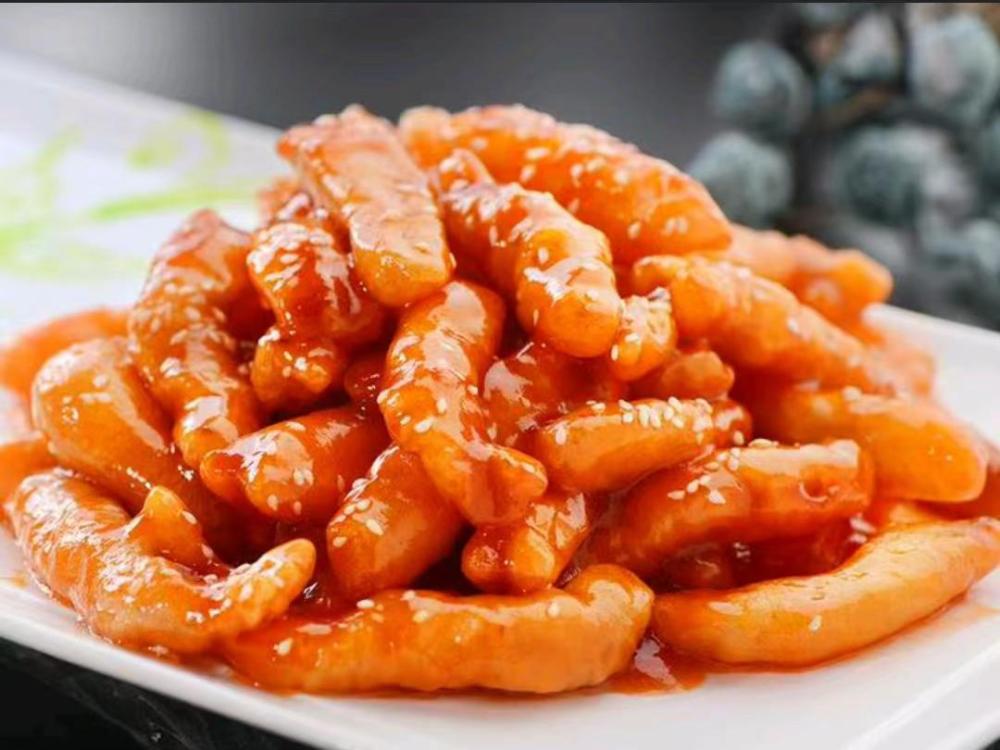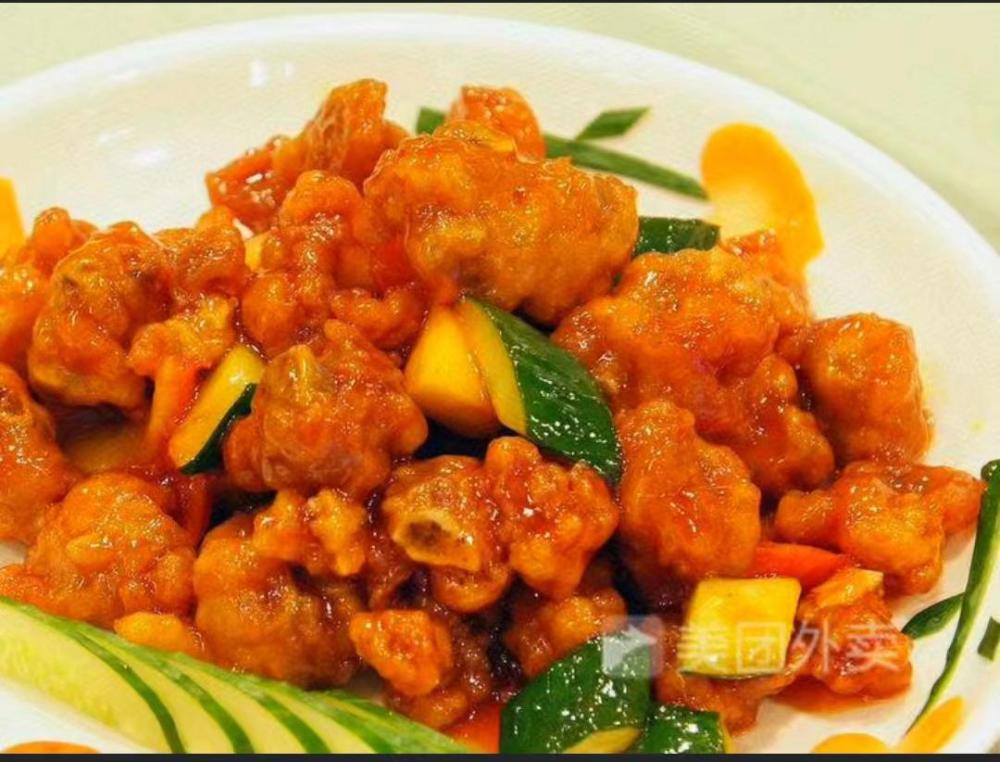According to Wikipedia so it must be true,
QuoteChinese restaurants in Western countries commonly serve [sweet and sour] chicken, pork, or shrimp
This is definitely true of the UK, where sweet and sour remains the second most popular Chinese food after ‘chow mein’. And with Chinese restaurants being the first choice for take home restaurant food in the UK, that lands sweet and sour near the top of the most eaten food list in the country. Sweet and sour certainly exists in China, but is nowhere near so popular. I can't remember the last time I saw it outside of a banquet setting.
But what interested me most in the article, and I’ve seen the same claims elsewhere, was the choice of proteins.
So, I decided to do a comparison of those “Chinese restaurants in Western countries” and the Chinese restaurants here in this Chinese city. I got onto my food delivery app and searched for ‘sweet and sour’ in the most common Chinese name - 糖醋 (táng cù, literally ‘sugar [and] vinegar).
There were three main choices of protein just as in Wikipedia’s article. However, not the same three! The most common choice was, of course, China’s default protein, pork. However, this was split into two distinct subcategories, sweet and sour pork tenderloin fillet - 糖醋里脊 (táng cù lǐ jǐ) - and sweet and sour pork ribs -糖醋排骨 (táng cù pái gǔ). I think those are different enough to treat them as different dishes, despite the common animal source. That is certainly how my neighburs think of them.
So breaking down the figures, I found 1,038 sweet and sour dishes available for delivery with the details being:
Sweet and Sour Pork Tenderloin - 351
Sweet and Sour Pork Ribs - 193
Sweet and Sour Chicken - 90
Sweet and Sour Fish - 404
Sweet and Sour Shrimp - 0
I have included shrimp (or prawns) for comparison purposes. Clearly, combining the two pork dishes makes that the most popular, but what may surprise people is that, of specific dishes, fish comes out top. It is certainly my experience that fish is what most often comes to people’s minds here at the mention of sweet and sour.
Shrimp however, popular in western Chinese restaurants, is completely absent. The simple truth is that shrimp are not easy sourced in most of China. I always smile ruefully when I see Kung-Pao Shrimp on a menu in the west. This Sichuan classic is almost unknown in Sichuan, a land-locked province.
The fish dishes usually utilise freshwater fish (yes, I know there are freshwater shrimp, too, but they are rarely used in western restaurants for the sweet and sour treatment.) Of those, 404 fish dishes, 218 are what is known as Squirrel Fish – 松鼠鳜鱼 (sōng shǔ guì yú) or Pine Fish – 松子鱼 (sōng zǐ yú). No squirrels or pine cones are involved. The fish, traditionally Mandarin Fish, Siniperca chuatsi, a freshwater species, is used (although grass carp or, in coastal areas, yellow croaker is often substituted). The body of the fish is scored in such a way that, when deep fried, the flesh opens up to resemble the tail of a squirrel or the petalled segments of an open pine cone. Prepared well, it can make for a spectacular banquet dish. After frying, it is coated with the sweet and sour sauce.
Squirrel Fish
As for the pork dishes, the tenderloin is normally dusted with starch (corn or potato starches are common), fried and again coated with the sauce. Most western restaurants try to replicate the Cantonese treatment known as 咕噜肉 (Mandarin: gū lū ròu; Cantonese: gu1 lou1 juk6).
Sweet and Sour Pork Tenderloin
In Cantonese areas, including Hong Kong, this is made using vinegar, preserved plums and hawthorn candy to give colour. Most western restaurants use food dyes instead, resulting in that day-glo orange colour which amuses Chinese visitors immensely. Chinese sweet and sour tends to be darker in colour. Also western versions tend to be much sweeter than their Chinese counterparts.
Pork ribs 生炒排骨 (Mandarin: shēng chǎo pái gǔ; Cantonese: saang1 caau2 paai4 gwat1 ) are given a similar treatment. The ribs are always chopped to chopstick-friendly pieces. No Fred Flintstone ribs, here.
Sweet and Sour Pork Ribs
It is interesting to note that most sweet and sour dishes are not cooked in the sauce. Nor is the protein usually battered, although a verion known as 鍋包肉 (guō bāo ròu) from Harbin in China's far north does use a potato starch batter. Also note, that the examples I have given are those most replicated in the west. There are regional variations and many other dishes featuring these proteins.
Images from Meituan (美团) food delivery app.






